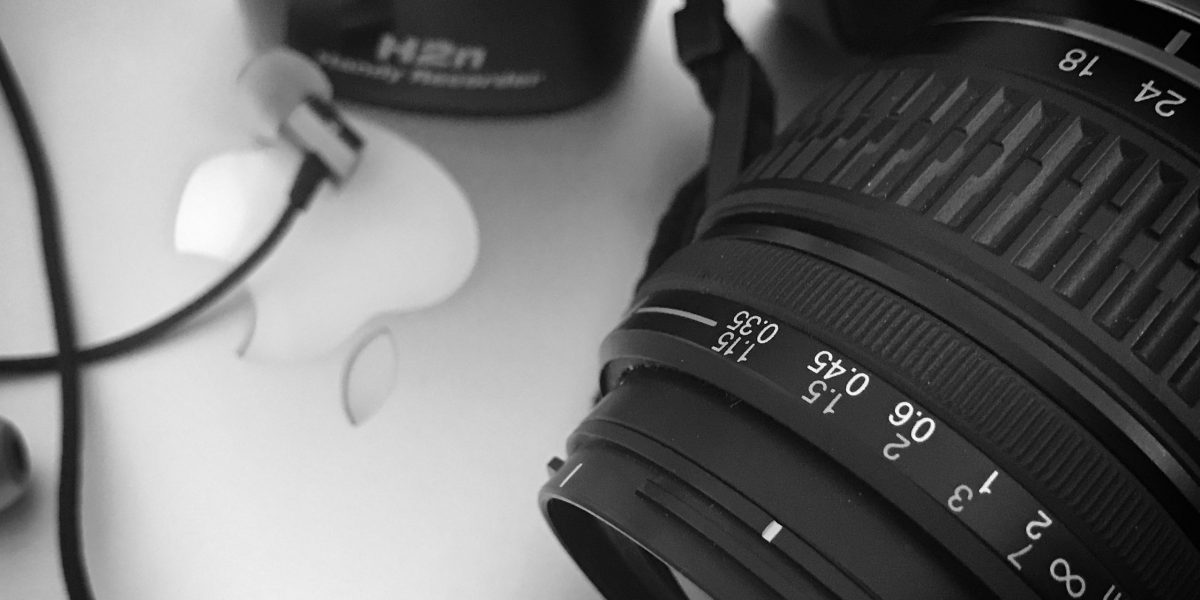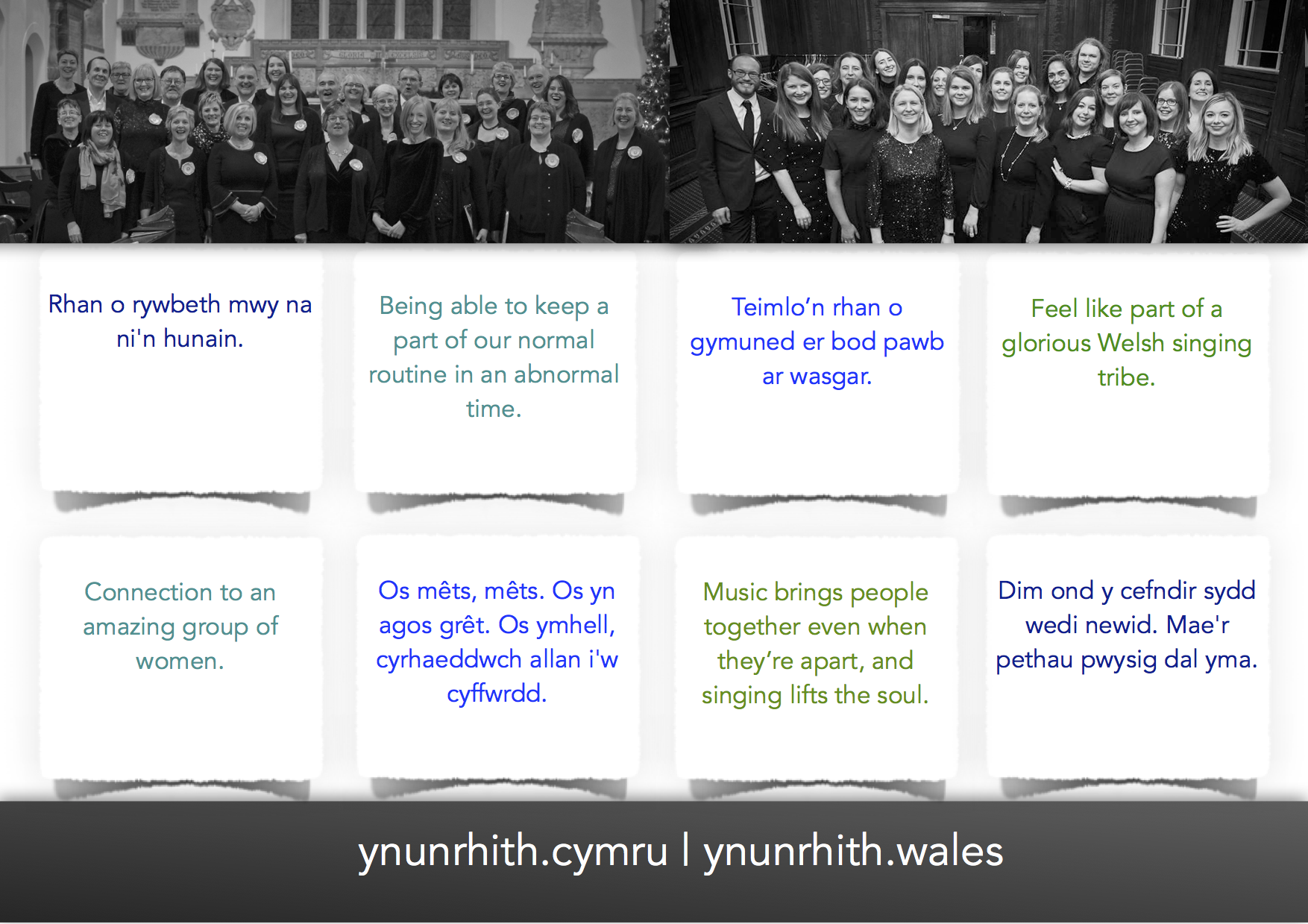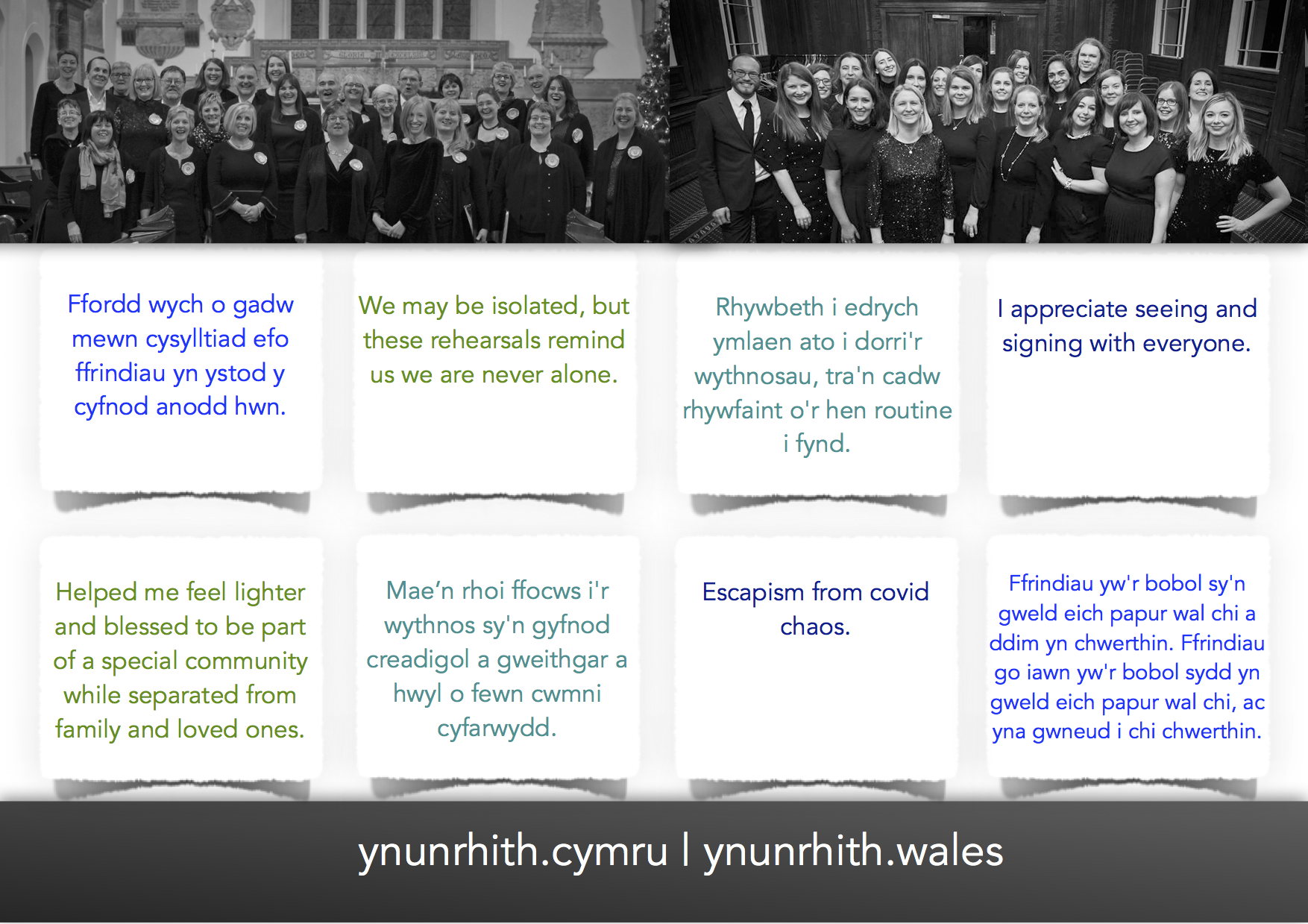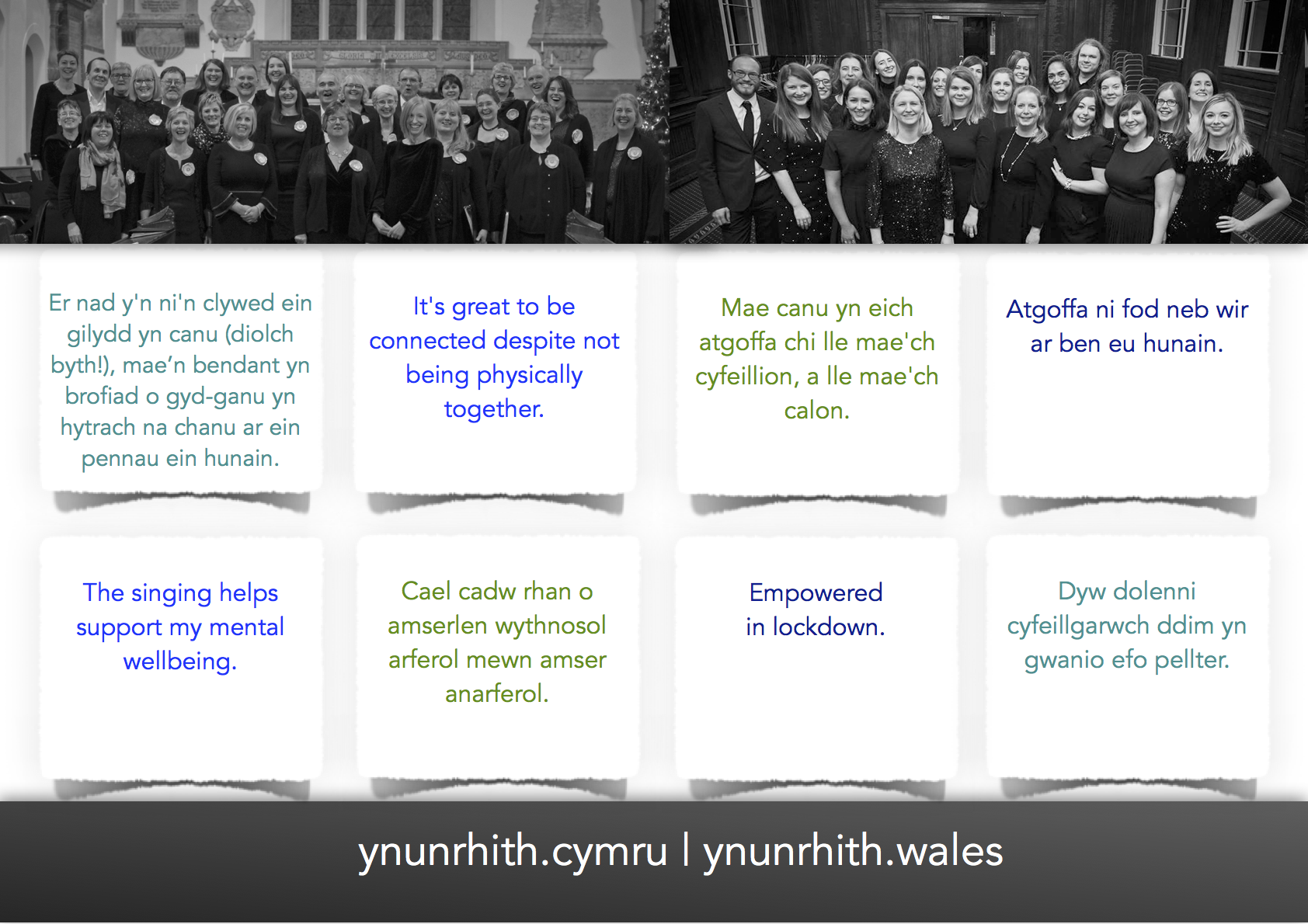We know that not everyone who wants to sing this piece will be entirely familiar with the Welsh language, but we would encourage you to think of it like singing a piece in any other language such as Latin, German, French, Russian, Italian, or, indeed, English!
We would suggest a multi-dimensional approach: listen to Dafydd reading his englyn to get an idea of how the poem flows in and of itself; then, listen to Gwennan Williams, director of Côr ABC, speaking the words of the poem more closely to their appearance in the score, including some of the repeated phrases (below); listen to the video of Côr ABC and Côr Dinas singing the piece as you look through the score to get a sense of how the words are sung; and use the phonetic guidance (below) to get a stronger sense of how the sounds relate to English.
A reading of the words
Here is Gwennan Williams reading the text more closely to the way it appears in the score, with some of the repeated words and phrases.
Phonetic comparisons for English-speakers
Before going further, it is probably worth noting that English comes in many flavours of accent, and the following guide for English-speakers is given using what would commonly be considered received pronunciation, or BBC, English.
Alphabetic comparison
Welsh is a phonetic language, for the most part, and so once you know how its alphabet and diphthongs work, it is relatively straightforward to sing. The letters and sounds used in the text of yn un rhith are as follows:
a – as in Paris or parade
â – as in barn or arm
b – as in babble or bumble
d – as in dog or dated
dd – voiced, as in the or soothe (not thorough or teeth)
e – as in egg or energy
f – voiced fricative, as in very or move
g – as in get or fog
h – unvoiced aspirate, as in happy or behold
i – as in need or beam
ll – unvoiced lateral (sides of tongue) fricative – as in Llanelli
n – as in nut or undo or bun
o – as in not or orange
ô – as in oar or fore or ‘law‘
oe – diphthong as in loiter or void
p – as in plate or trap
r – is voice and rolled
rh – is unvoiced and rolled with an aspiration
th – unvoiced, as in thorough or wreath
u – as in need or indeed
w – is contextual, either as in food, or, as in good
y is contextual:
– alone, at beginning, or in middle of word – as in undone or run
– at end of word – as in sit or coming, or as in need or indeed
The poem in English phonetics
With all that in mind, Dafydd’s poem,
Er o bell, roedd herio byd heno'n gân
yn y gwaed, yn fywyd,
pob tôn yn fonllef hefyd,
yn un rhith, yn gôr o hyd.
can be rendered phonetically as something like
air o bell, roythe hairyo beed hairno'n garn
un uh gwide, un vuhwid,
pob torn un vonllev hehvid,
un een rheeth, un gore o heed.
In this version, we have shown the few sounds that do not exist in English in bold. To help a little more, below is a word by word guide.
Word by word English phonetics
Er o bell, roedd herio byd heno’n gân
er – like the ‘e’ of ‘hello’ plus a rolled r.
o – as in ‘or’
bell – like ‘bear’ ending with a ‘ll’ sound
roedd – like ‘roy’ ending with the voiced ‘th’ of ‘the’
herio – like ‘hair’ with ‘Rio’; the ‘r’ should be rolled; the ‘io’ is quite quick and nearly becomes ‘yo’ as in ‘yoghurt’.
byd – like bead
heno’n – like ‘hair’ plus ‘nor’, voice the ”n’ at the end, which really belongs to the next word …
gân – like ‘garn’, then move straight on from the ‘n’ of ‘gân’ to the next word …
yn y gwaed, yn fywyd
yn – like ‘un’
y – like ‘uh’ or the ‘ur’ of ‘urban’
gwaed – like ‘wide’ but beginning with a hard ‘g’
yn – like ‘un’
fywyd – like ‘vuh’ plus ‘wid’, as in ‘widow’; the ‘w’ sound should be very subtle not be strongly enunciated.
pob tôn yn fonllef hefyd
pob – like ‘paw’ ending with a ‘b’
tôn – as in ‘torn’
yn – like ‘uh’ or the ‘ur’ of ‘urban’
fonllef – like ‘on’ beginning with a ‘v’, plus the ‘ev’ of ‘ever’ beginning with the Welsh ‘ll’
hefyd – like the ‘hea’ of ‘heavy’ plus the ‘vid’ of ‘video’
yn un rhith, yn gôr o hyd
yn – as in ‘un’
un – like the ‘ean‘ of ‘bean‘
rhith – like ‘wreath’ but with the added breath of an ‘h’ instead of ‘w’ alongside the rolled ‘r’
yn – as in ‘un’
gôr – as in ‘gore’
o – as in ‘or’ or the ‘aw’ of ‘law‘
hyd – as in ‘heed’




